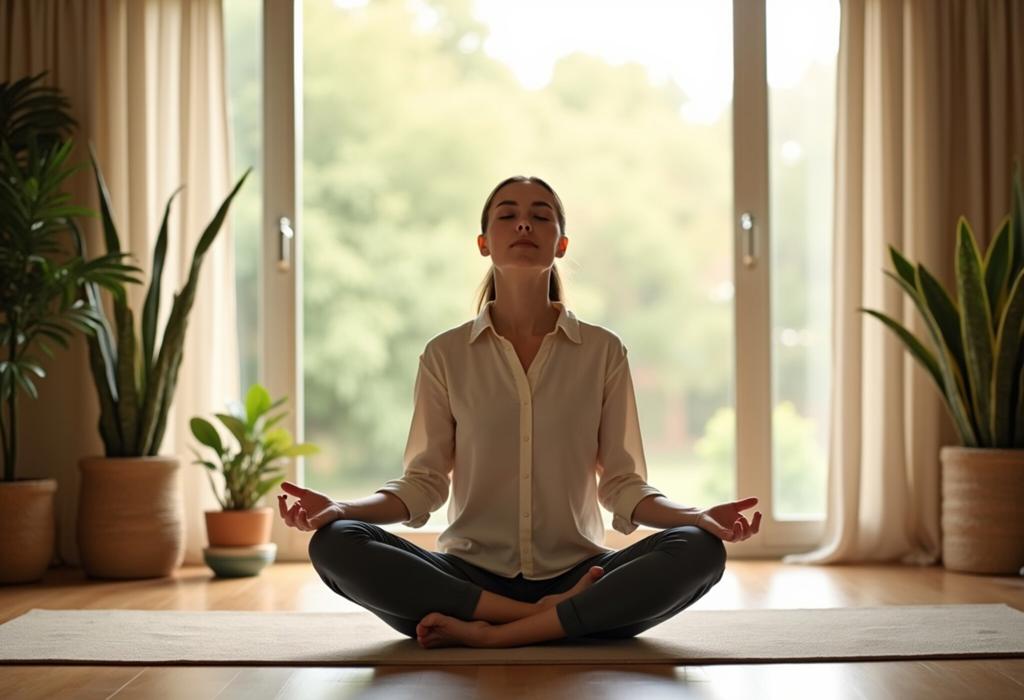For more details on this content, please review the step-by-step guide and frequently asked questions.
How To Manage Anxiety with Breathing Exercises

Step-by-Step Guide
Understanding Anxiety
Before diving into breathing exercises, it's crucial to understand what anxiety is. Anxiety is a normal response to stress, but when it becomes overwhelming, it can interfere with daily activities. Learning about anxiety helps you recognize the feelings you experience and how breathing exercises can aid in reducing those feelings.
Choosing a Calm Space
Find a comfortable and quiet place to practice your breathing exercises. Minimizing distractions will help you focus on your breath and the exercises. Ensure that the area is comfortable and has adequate ventilation.
Posture Matters
Sit or lie down in a comfortable position. If sitting, keep your back straight and your feet flat on the floor. If lying down, let your arms relax by your sides. Maintaining good posture encourages effective breathing.
Begin with Basic Breathing
Start with simple deep breaths. Inhale slowly through your nose for a count of four, hold for a count of four, and exhale through your mouth for a count of four. Repeat this cycle five times, focusing on each part of the breath.
Practice Abdominal Breathing
Once you’re comfortable, try abdominal breathing. Place one hand on your chest and the other on your belly. Inhale deeply through your nose, ensuring that your belly rises more than your chest, and exhale through your mouth. This technique helps maximize oxygen intake and promotes relaxation.
Incorporate Visualization
As you breathe, visualize a peaceful scene – like a quiet beach or a serene forest. Imagine each breath bringing you closer to that peaceful state of mind, and with each exhale, visualize letting go of tension and anxiety.
Explore the 4-7-8 Breathing Technique
The 4-7-8 technique is excellent for relaxation. Inhale through your nose for 4 seconds, hold your breath for 7 seconds, and then exhale slowly through your mouth for 8 seconds. This technique can help reduce anxiety and induce sleep.
Use Breath Counting
To keep your mind focused, you can count your breaths. Inhale and exhale while counting each breath up to ten, then start again. If your mind wanders, gently redirect your focus back to the counting.
Engage in Progressive Muscle Relaxation
Combine your breathing exercises with progressive muscle relaxation. As you inhale, tense a group of muscles (e.g., your fists), and as you exhale, release the tension. This technique will help enhance the calming effects of your breathing practice.
Create a Breathing Routine
Establish a routine to practice your breathing exercises. Allocating time each day, even just 5-10 minutes, can help make these exercises a habit. Consistency is key in managing anxiety effectively.
Monitoring Your Progress
Keep a journal of your experiences with breathing exercises. Track when you practice, how you felt before and after, and notice patterns. This will help you figure out what works best for you in managing your anxiety.
Seek Professional Help If Needed
While breathing exercises are beneficial, it’s important to reach out for professional help if anxiety becomes difficult to manage on your own. A therapist or counselor can provide additional strategies and support.








